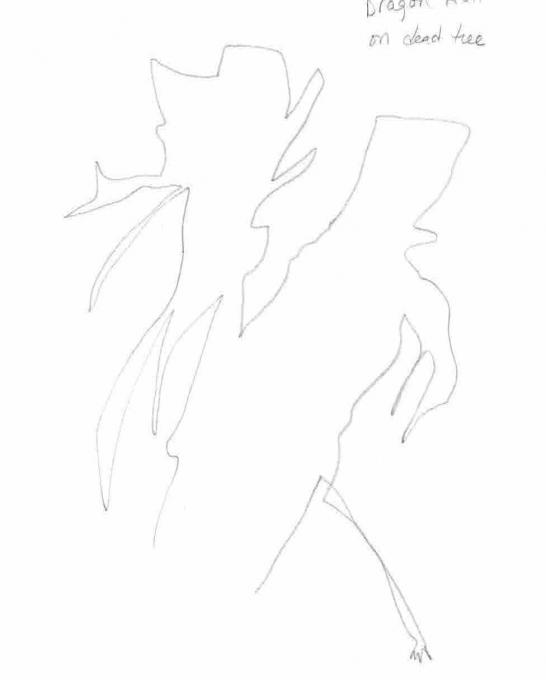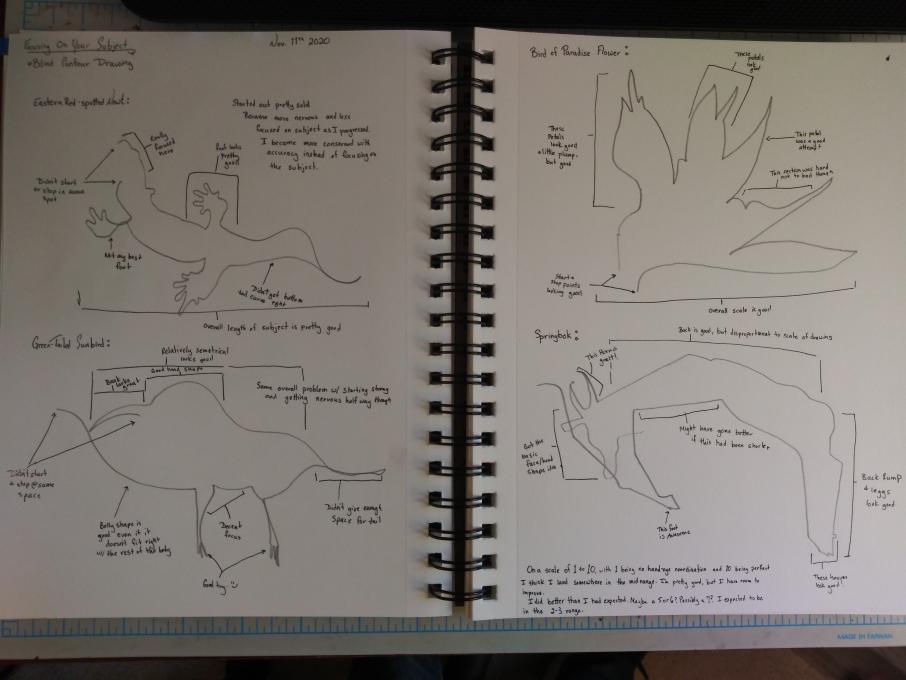The Cornell Lab Bird Academy › Discussion Groups › Nature Journaling and Field Sketching › Focusing on Your Subject – Blind Contour Drawing
-
I think I drew too quiuckly, but it was an interesting exercise, and made me look more closely at the outlines.
-

-
This was very difficult.
-

-
This was definitely a challenge and not natural (I accidentally looked for a sec on one...but I didn't see anything;) )! To tell the truth, the only one that I did decent on was the Springbok... but I did make sure to find the successes in all of my contour drawings! I will get better with practice. And good job to all that did this practice! :D
-
 This was a fun exercise! I think certain subjects are easier to blind contour than others. If the subject's shape is continuous and flowy, I'll have an easier time drawing, like with the sunbird and the bird of paradise flower.
This was a fun exercise! I think certain subjects are easier to blind contour than others. If the subject's shape is continuous and flowy, I'll have an easier time drawing, like with the sunbird and the bird of paradise flower. -
It kept me focused, that's for sure. But a bit frustrated--I thought we were getting away from long, heavy lines. My stuff looked like bad cartoons. I couldn't find a part that I did well (OK, being too judgmental here).
-
this was a fun exercise. it helps to keep things light and not take your work too seriously. I tend to get fixated on my drawings so this is a great way to loosen up and also work on the mind and hand connection.
-
 This really forced me to let go and just focus on one thing. I think it'll be very useful for those times when I see a bird or animal and I know the moment is fleeting. I don't want to look away to draw or get my camera out. To be able to capture any memory during that brief moment would be very satisfying.
This really forced me to let go and just focus on one thing. I think it'll be very useful for those times when I see a bird or animal and I know the moment is fleeting. I don't want to look away to draw or get my camera out. To be able to capture any memory during that brief moment would be very satisfying.
-

-
I did not do well with this exercise. My hands did not create a good image without looking at the subject. Bunch of scribbling actually. But I was focused on the images, so I guess that was somewhat of a success. I did do a good job on the feet of the lizard. lol
-
I think blind=contour drawing helped me concentrate. One aspect that was difficult was how far to go on a fairly long line. I found my eye jumping to the top; I think slowing the eye down and following that visual with my pencil will help make the drawing more proportional. I did pretty well with the overall shape, but 3/4 of the time didn't end up where I began. I felt good about the fact that I finished where I started on the springbok drawing.
-
I enjoyed the blind drawing. Here are two examples of what I did. This process made me concentrate on the every little bump in each picture. Suzanne N

-

-

-
 Loved this exercise. It removes any unhelpful self talk.
Loved this exercise. It removes any unhelpful self talk. -
This was very difficult but fun. It shows to me how the brain functions. I tried to concentrate but found myself drawing fast. Especially see that in the antelope drawing. Difficult drawing the head. I didn’t look either. This was a difficult exercise but I actually enjoyed seeing hoe each one would look like.
-



-
this is SO hard! my beginnings never matched up with my ends! I was very focused though. and that's the point
-
This exercise helps me feel like a 4 year old again! It certainly builds empathy for the mental effort and concentration it must be for the kiddos to learn how to write and distinguish letters. This has truly built respect. So... my drawings made me laugh, even as I felt a bit of anxiety and vulnerability in trying to capture the weird lines and proportions. Something else this exercise did for me was to let go (a little bit) on trying to sketch perfectly. I thinks it has loosened me up to sketch more quickly too and lighten up.
-
Barbara, I really appreciated your post. Your insight into vulnerability and empathy-building mirrored my own. It would be an exercise in frustration if the product was the purpose. Alas, the PROCESS is what counts and I think this may be one of my favourite mini-exercises. A lesson in humility? Yes. But also a wonderful way to "let go" and bear witness to the details of our subject rather than worrying about the perfection of the product.
-
-

 yes, it helps to focus in the object
yes, it helps to focus in the object -
My bird of paradise flower came out the best even though my points didn't meet for any of them... Dragon fruit (cactus not fruit) on a dead tree.

-
Wow. This was extremely difficult. My first attempts bore little resemblance to the pictures. Successive attempts showed some improvement. I found it almost impossible to not look at the paper. I was not able to maintain proportions and come back the starting point. I found little in first attempt that I could say was close to what I intended. By the 4th sketch, I was better able to at least end up with a decent representation. I could tell what it was. This will take lots of practice. When I am sketching in nature, I usually will take a photo and then sketch from that.
-
Although the visual results were humbling, I felt the exercise has helped me see the entire object and think about what I want to include in a drawing in advance of putting pencil to paper. Although the drawings started well, I soon lost a sense of proportion on the page as I tried to move my hand away from the start. I had to be absolutely focused as my mind's eye tried to transfer visual input into hand movement.
-
Blind contour drawing is something I've never been comfortable with. All things considered I think my drawings turned out pretty well. I tried to focus on the subject and plan where I wanted to start based on where it seemed the best connecting point would be. My attention was on the shape of the subject and the scale it should be on my paper space. It was interesting focusing on connecting the motion of my hand to the visual input from what I was seeing. The process did make me feel more focused and connected to my subject.

Read More:


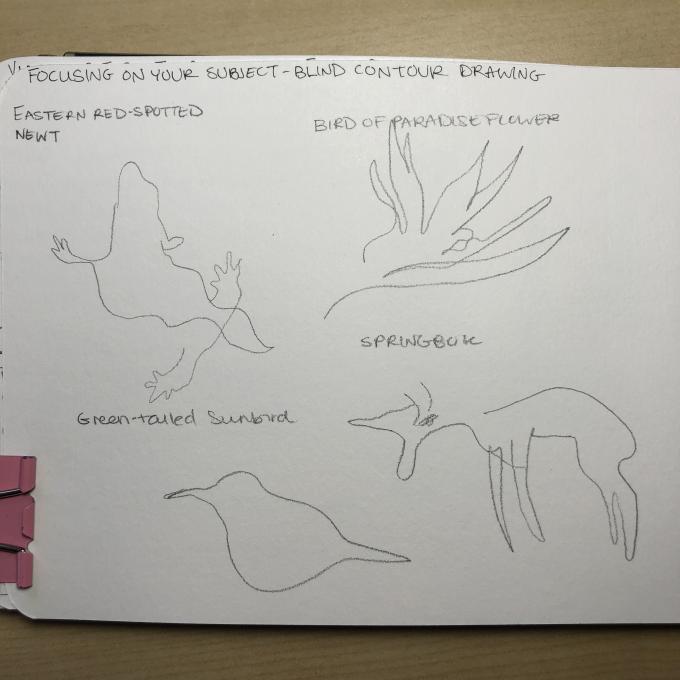 This was a fun exercise! I think certain subjects are easier to blind contour than others. If the subject's shape is continuous and flowy, I'll have an easier time drawing, like with the sunbird and the bird of paradise flower.
This was a fun exercise! I think certain subjects are easier to blind contour than others. If the subject's shape is continuous and flowy, I'll have an easier time drawing, like with the sunbird and the bird of paradise flower.  This really forced me to let go and just focus on one thing. I think it'll be very useful for those times when I see a bird or animal and I know the moment is fleeting. I don't want to look away to draw or get my camera out. To be able to capture any memory during that brief moment would be very satisfying.
This really forced me to let go and just focus on one thing. I think it'll be very useful for those times when I see a bird or animal and I know the moment is fleeting. I don't want to look away to draw or get my camera out. To be able to capture any memory during that brief moment would be very satisfying.
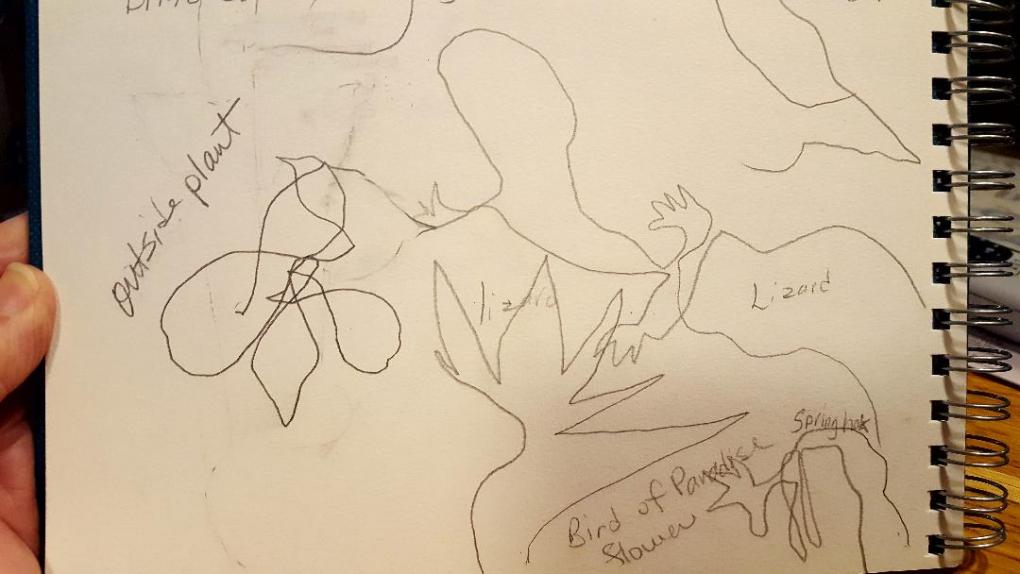
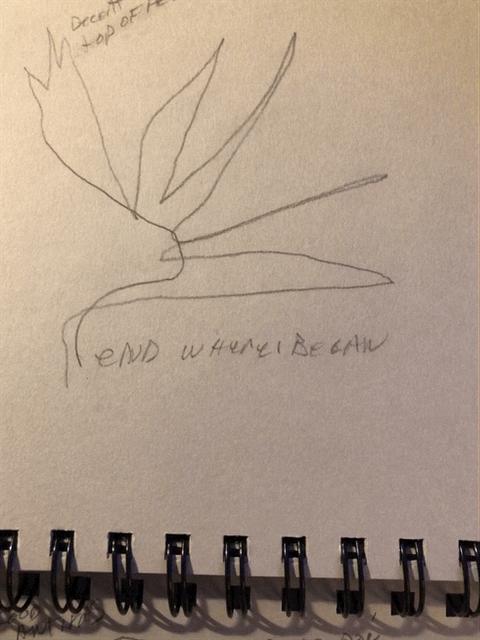
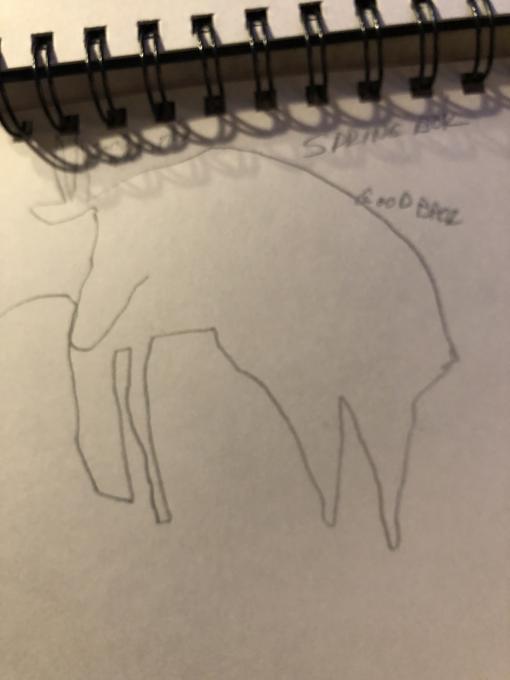
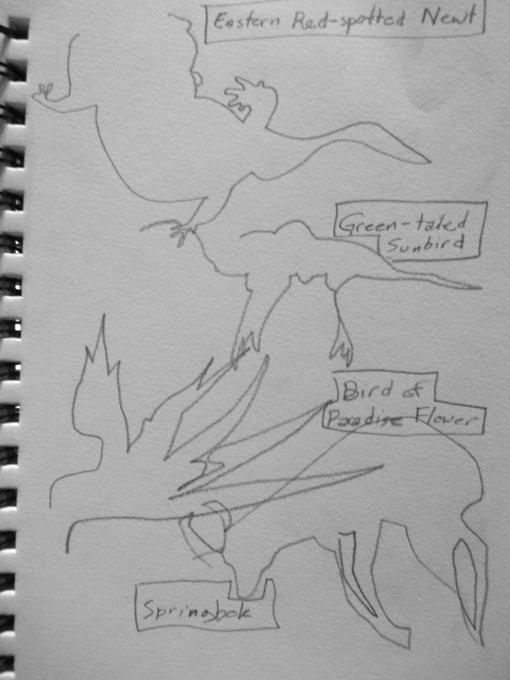
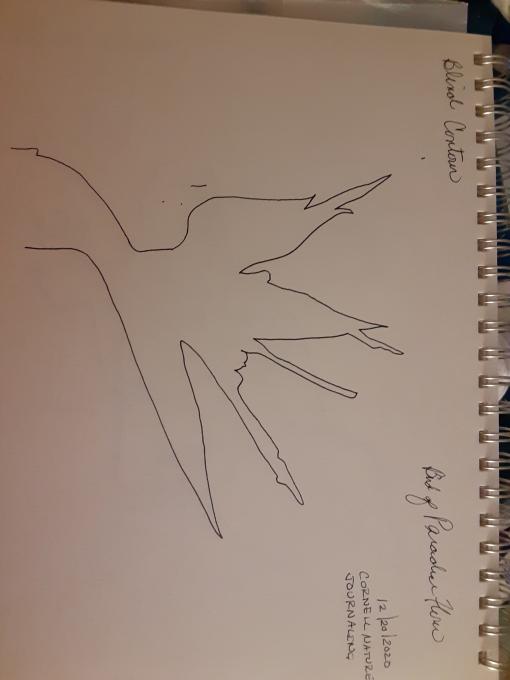 Loved this exercise. It removes any unhelpful self talk.
Loved this exercise. It removes any unhelpful self talk. 
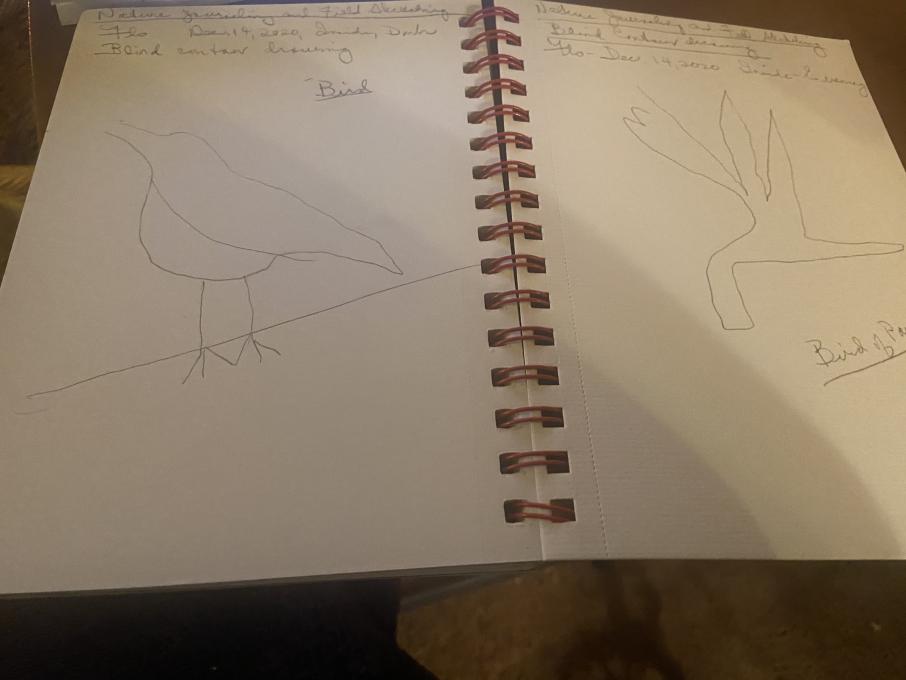

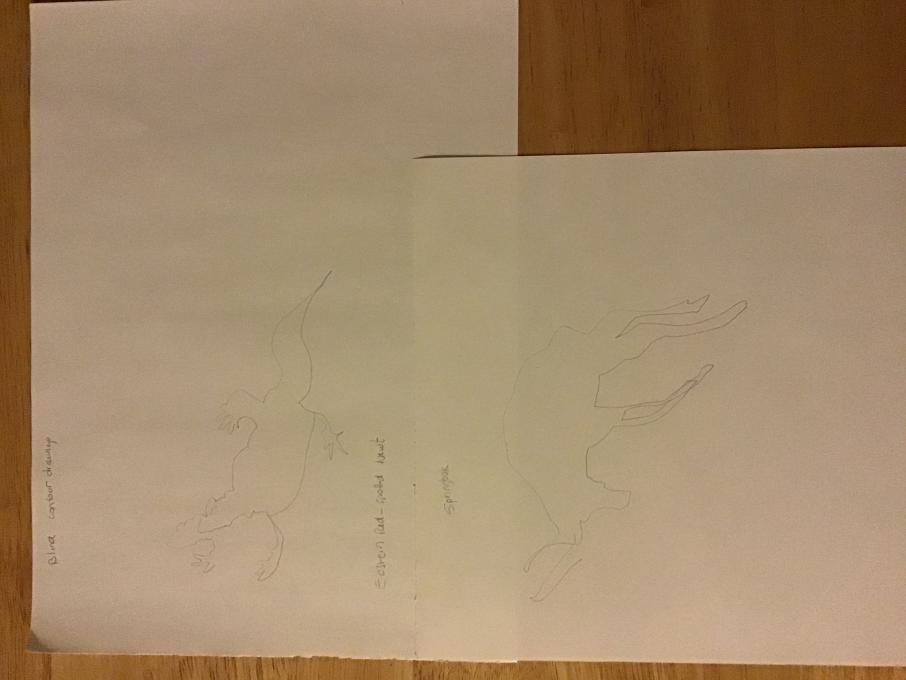
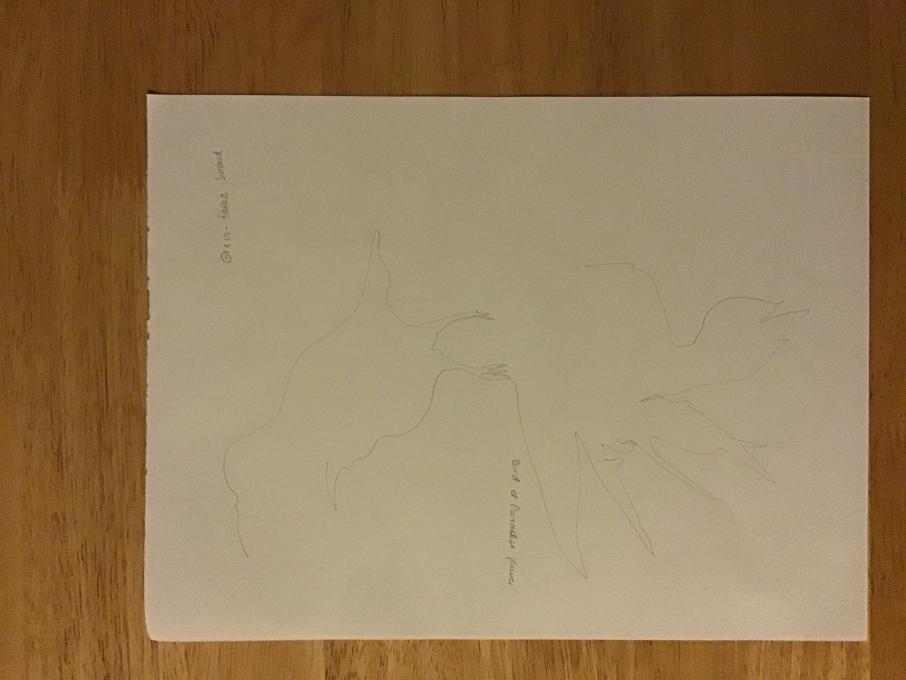 yes, it helps to focus in the object
yes, it helps to focus in the object 